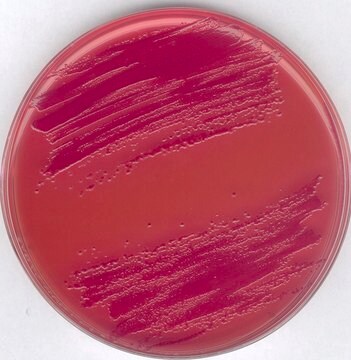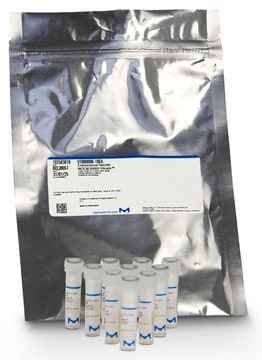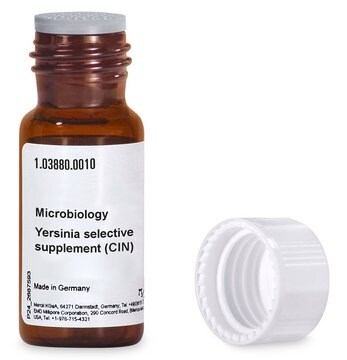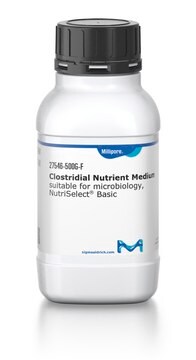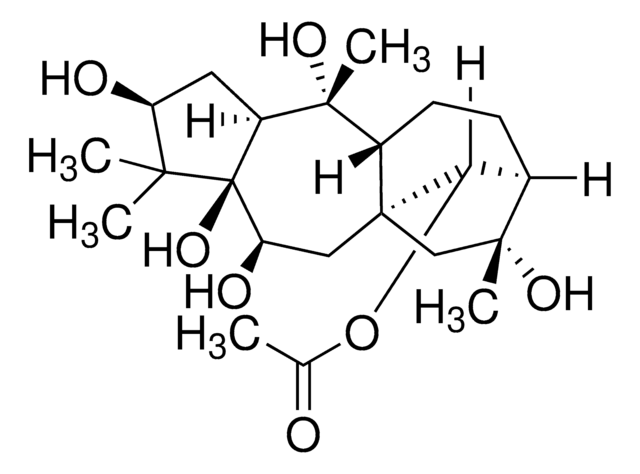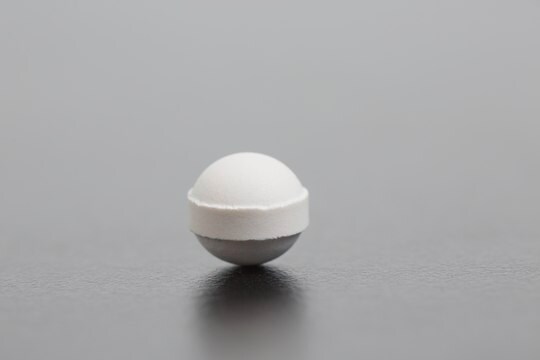67651
Y. enterocolitica Millichrome™ plus Agar Base
suitable for microbiology
Synonym(s):
Yersinia chromogenic agar
About This Item
Recommended Products
Agency
EP
JP
USP
Quality Level
Sterilization Compatibility
dry heat compatible
form
dry powder
shelf life
limited shelf life, expiry date on the label
composition
Agar, 15.0 g/L
Chromogenic Mix, 1.3 g/L
Chromogenic mix, 1.3 g/L
Peptones, 20.0 g/L
Salts, 5.0 g/L
manufacturer/tradename
MilliChrome™
technique(s)
microbiological culture: suitable
final pH
7.0±0.2 (25.0 °C)
solubility
deionized water: 41.3 g/L
application(s)
food and beverages
microbiology
shipped in
ambient
storage temp.
15-25°C
suitability
selective for bacteria: Yersinia enterocolitica
General description
Application
Preparation Note
- Disperse slowly 41.3 g of powder base in 1 L of purified water.
- Stir until agar is well thickened.
- Heat and bring to boil (100 °C) while swirling or stirring regularly. DO NOT HEAT TO MORE THAN 100 °C. DO NOT AUTOCLAVE AT 121 °C.
- Cool in a water bath to 45-50 °C +/- 2 °C.
- Step 2 (Preparation of the Y. enterocolitica Millichrome™ plus Supplement)
- Prepare a stock solution of the supplement: Add 100 mg to 1 mL of purified water.
- Swirl well until complete dissolution. Filter sterilize at 0.45 μm.
Step 3 (Mixing of the prepared base and the prepared supplement)
- Add 1 mL of the prepared supplement solution to the prepared base cooled at 45-50 °C +/- 2 °C.
- Swirl gently to homogenize.
- Pour into sterile Petri dishes.
- Let it solidify and dry.
Analysis Note
Legal Information
Hazard Statements
Precautionary Statements
Hazard Classifications
Aquatic Chronic 3
Storage Class Code
11 - Combustible Solids
WGK
WGK 2
Choose from one of the most recent versions:
Certificates of Analysis (COA)
Don't see the Right Version?
If you require a particular version, you can look up a specific certificate by the Lot or Batch number.
Already Own This Product?
Find documentation for the products that you have recently purchased in the Document Library.
Our team of scientists has experience in all areas of research including Life Science, Material Science, Chemical Synthesis, Chromatography, Analytical and many others.
Contact Technical Service
